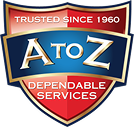Spring is here, making it an ideal time to give your plumbing system a check-up. Scheduling a plumbing tune-up can boost efficiency and help prevent expensive problems down the line. Seasonal inspections can uncover leaks, improve water flow, and ensure that your water heater and sump pump operate smoothly. Keeping your plumbing in good condition conserves water and helps reduce energy bills, ultimately saving you money over time.
Spring tune-ups keep plumbing in excellent condition, from finding hidden leaks to flushing your water heater. Here are some maintenance services you can schedule for this spring.
How Plumbing Tune-Ups Save You Water and Energy
Over the course of the winter season, a lot of wear and tear can happen to your plumbing system, especially in an area like Niles, where we experience wild weather swings. When our plumbing systems collect soap scum and grease, the cold temperatures make these much more likely to create clogs. Also, with freezing temperatures being the norm, pipes can become cracked, which reduces their efficiency and drives up your utility bills.
A plumbing tune-up, performed by one of our licensed plumbers at [company_name], will catch any issues that might have cropped up during the cold season. We’ll examine your pipes, check for plumbing system damage, and perform any repairs to ensure an efficient spring, summer, and fall.
Why Tune-Ups Are Beneficial
A plumbing tune-up includes a wide array of maintenance procedures designed to improve your system’s efficiency. One of our plumbers will check all plumbing fixtures for inefficiencies, pipe issues, water heater faults, proper relief valve operation, and the status of the system’s thermostat. Here are a few other included procedures.
Mineral Built-up Removal
Over time, minerals like calcium and limescale build up in your pipes. This is a direct contributor to hard water, which reduces water pressure and causes corrosion. It is also a major problem, as it causes clogs in the system. When performing spring tune-ups, we will clear all mineral deposits from your lines. When there are fewer blockages, the system runs more efficiently.
Get Your Sump Pump Tested
When one of our plumbers performs a sump pump tune-up, we lubricate the bearings, check for corrosion and worn parts, clean the pump itself, examine the discharge pipe, and ensure the power supply and backup battery are in good condition. Sump pump maintenance should happen once a year, and spring is a good time to have it performed along with your spring tune-ups. Remember, a poorly functioning sump pump will have to work harder, which means higher water and electricity bills.
Water Heater Check Ups
Like other components in your plumbing system, your water heater will collect sediment over time. Sediment acts as an insulating layer, which, over time, reduces the effectiveness of the heating element. When the heater has to work harder to heat water, you can expect higher utility bills. One of the primary processes of a plumbing tune-up is to flush the water heater and reduce sediment buildup. These checks should take place annually.
Pipe Check Ups
One major potential cause of higher water bills is cracks in your plumbing system. These can come from various sources, including frozen pipes that ruptured during the winter and pipes cracked by underground root systems. No matter the cause, having ruptures in your plumbing will increase your water bill. During the tune-up process, our plumbers will inspect your entire system for ruptures using a camera and initiate repairs if needed.
Consider Water Efficient Bathroom Fixtures
When you invest in better bathroom fixtures, you end up saving money on both your water and energy bills. These fixtures easily integrate into your existing plumbing system, and in addition to saving you money, they also reduce carbon emissions by decreasing the need for treating and pumping water.
Additionally, since they have a reduced water flow, these fixtures will actually extend the life of your plumbing system. Overall, there are many reasons why you should consider more efficient bathroom fixtures. With that in mind, let’s take a look at some of the types.
WaterSense Faucets
WaterSense uses faucet aerators and valves that add air to the water stream. As a result, you get a strong stream of water pressure without the need for as much water. When using a WaterSense aerator, you’ll never notice that you’re using less water. It will seem like the standard flow rate that most faucets generate.
Still, while the aerator mixes air and water, the flow rate of water is significantly reduced. While a standard faucet produces about 2.2 gallons per minute (GPM), a WaterSense faucet will deliver about 1.5 gallons in the same period. WaterSense is a certification for flow rates in faucet lines and is similar to the EPA’s Energy Star certification for energy efficiency. Effectively, to be WaterSense-certified, the faucet has to be at least 20% more water-efficient than standard faucets.
Low Flow Shower Heads
Showers consume up to 1.2 trillion gallons of water per year, which equates to about 2.5 gallons of wasted water for standard showerheads each minute. In addition, about 20 to 30% of heated shower water goes to waste, resulting in higher utility bills.
Similar to WaterSense faucets, low-flow showerheads, which can also be WaterSense-certified, use aerators to mix air into the water stream and flow restrictors to perform the same function. A standard showerhead runs between 2.5 GPM for newer models and 2.5 GPM for older variations. This reduces to between 1.5 and 2 GPM with a WaterSense low-flow showerhead.
In addition to aerating showerheads, there are also laminar variations. Laminar showerheads create individual streams that use less water rather than the misty experience you get with aerating showers. Laminar showerheads also generate reduced humidity and steam.
Pressure-Reducing Valves
A pressure-reducing valve (PRV) reduces water bills by decreasing water flow. Some estimates suggest this can lead to up to 30% reduced water usage, which significantly lowers monthly water bills. This is also beneficial for the environment because using less water creates less wastewater, which requires treatment. Furthermore, since there is reduced internal pressure within your pipes, your plumbing system experiences less wear and tear.
High-Efficiency Toilets
When it comes to water and energy waste, the toilet is one of the worst offenders. A standard toilet uses 1.6 gallons of water per flush, even after legislation to reduce water waste was passed.
Fortunately, there are now more efficient toilet options that actively use less water per flush. Here are a few to consider:
- Gravity flow toilets
- Low flow toilets
- Pressure-assisted toilets
- Dual-flush toilets
Contact [company_name] for Your Spring Tune-up
When you keep your system efficient, you’ll experience genuine savings on your utility bills. Whether it’s just standard maintenance or using more efficient fixtures, it’s all very worthwhile when it comes to the functioning of your plumbing. At [company_name], we want to help Niles residents save money and live sustainably.
Our plumbers offer the following plumbing services: tank and tankless water heaters, sewer line repair, drains, septic cleaning, high-pressure jetting, sump pumps, backwater valves, downspouts, and excavation. Our company also provides heating and cooling services. Call us today for your next spring tune-up session!

